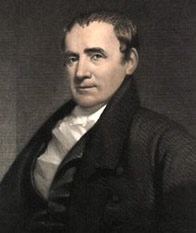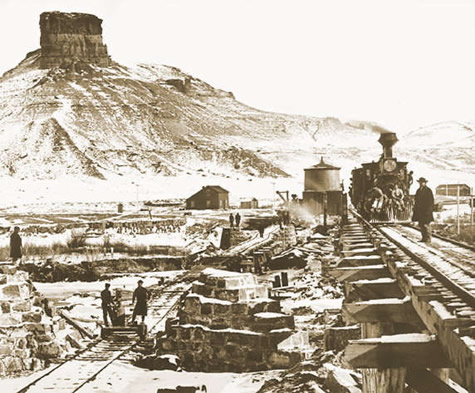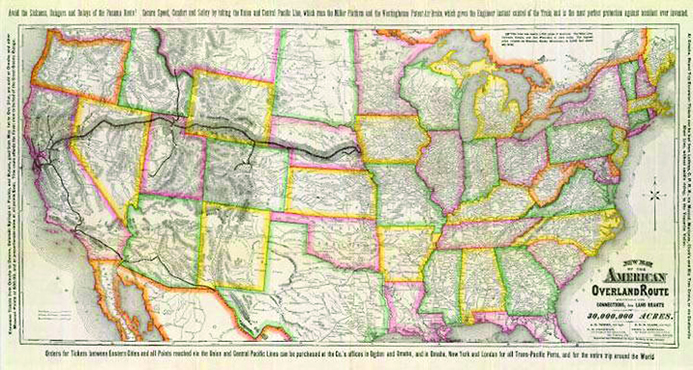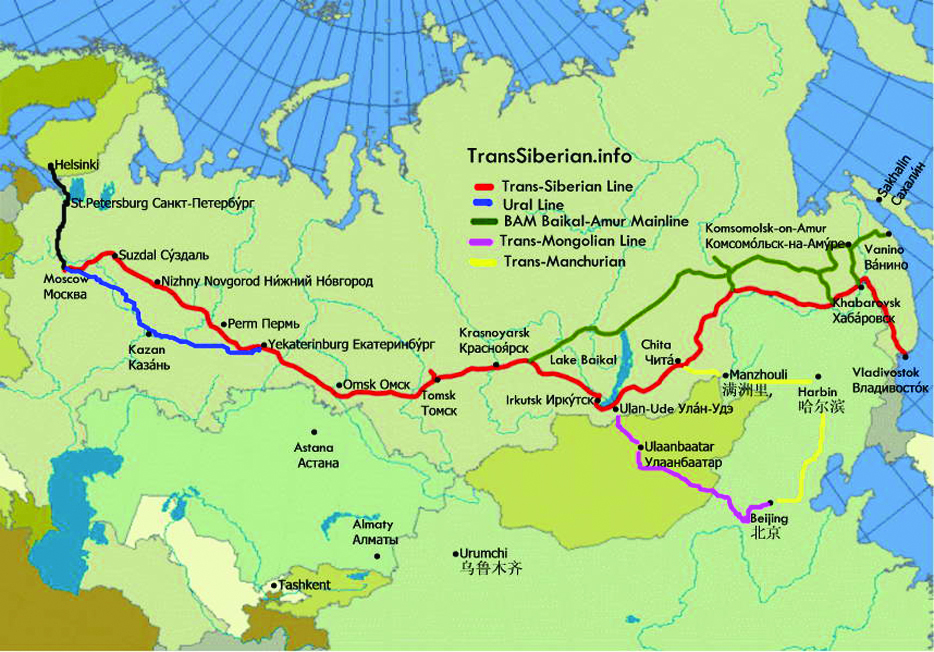This Week in History
May 6-12, 1869:
Completion of U.S. Transcontinental Railroad
May 2012
|
|
 |
 |
|
In this day and age of insane privatization, deregulation, and collapse of basic infrastructure, it is only right that we turn our attention to that great accomplishment of American government-industry partnership, the Transcontinental Railroad. Initiated by President Abraham Lincoln in the form of the Pacific Railroad Act in 1862, this crucial linkage between the eastern and western United States, was finally completed with the driving in of a golden spike on May 10, 1869, at Promontory Summit, Utah.
President Lincoln himself, who had run for office as early as 1832 on the program of building a transcontinental railroad, provided the top-down leadership for implementing this great project. He is reported to have told Union General Grenville Dodge, later a chief engineer on the project, that the road had to be built, "not only as a military necessity, but as a means of holding the Pacific Coast to the Union." The unifying function of the railroad was directly reflected in the statement engraved on the golden spike: "May God continue the unity of our Country as this Railroad unites the two great Oceans of the world."
The story of the building of the Transcontinental Railroad is a story of how the Federal government fulfilled its responsibility for developing vital infrastructure, by providing the means for financing, and the other prerequisites for the construction of a major national project, which would serve to promote the general welfare, and advance the culture, of the entire nation. The cross-country railroad was, in fact, a vital part of President Lincoln's conception of "binding up the wounds" of the nation after the Civil War.
Under the original 1862 law, which was amended numerous times later, provision was made for creating two quasi-public corporations. One was the Central Pacific Railroad, which was an already extant corporation based in California, and which was mandated to start construction from Sacramento eastward. The other corporation created was the Union Pacific Railroad (as historian Stephen Ambrose points out, a polemical title in itself, in the midst of the Civil War), which had the task of building the rail-line westward, from Council Bluffs, Iowa, right at the point of the Missouri River.
The engineering tasks to be accomplished, of course, were gigantic, particular the need to forge a pathway through the Sierra Nevada Mountains. The surveying needs were also daunting, as significant errors in mapping could end up with the two railroads failing to connect!
To meet the financing needs, the Federal government pledged a certain amount of money in low-interest Federal bonds for every mile of track that each rail company completed, and which had been certified as having been constructed up to par, by government inspectors. The amount of bonds provided ranged from $12,000 per mile for flat track, to $48,000 per mile for especially challenging areas, such as routes through the mountains. The rail companies were also given land grants along side the track, which served to provide the space for the building of living facilities, water and repair facilities, and the nuclei for towns. This was possible because most of the land in the West was in fact public land.
 |
| Among the most significant strategic accomplishments behind the revolutionary technolgical advances of the United States of the late-19th/ early-20th centuries, was the development of the Transcontinental Railroad system, and the parallel development of Russia's Trans- Siberian Railway, as shown on the maps. |
But there was another aspect to the Transcontinental Railroad, which underscored Lincoln's concept of this project as a development corridor, which would unify, and contribute to the development of, the nation. That was the fact that, along with the rail track, the rail companies were mandated to lay telegraph lines, which would provide for vastly enhanced communication from one part of the nation to the other. Thus, when the Golden Spike was actually driven on May 10, 1869—a good seven years before the link-up was scheduled, according to the national legislation—word immediately went out by telegraph all over the world: "DONE!"
Festivities, already well-prepared, broke out all over the country, as Americans from all walks of life celebrated what was recognized as a politically significant, and virtually heroic feat, to the benefit of the entire country. Former slaves, and former soldiers from both sides in the Civil War had worked side by side, along with Chinese immigrants and others, to bind the nation together.
In this respect, the Transcontinental Railroad is a model today, as a project turned national mission, which can mobilize the American people, along with others, to achieve both the economic development and political unity which is so needed today.

